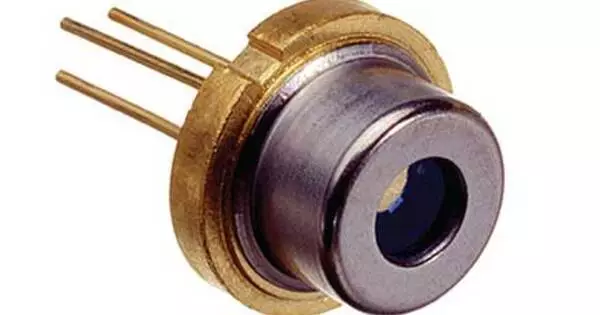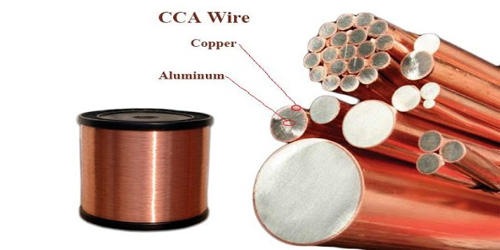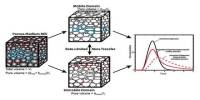A laser diode (LD) is a semiconductor device similar to a light-emitting diode in which a diode pumped directly with electrical current can create lasing conditions at the diode’s junction. It is a semiconductor device that emits coherent light via the stimulated emission process. It is a diode type that converts electrical energy into light energy. Laser diodes are widely used in telecommunications, optical storage devices, laser pointers, laser printers, barcode scanners, fiber optic communication systems, and a variety of other technologies.
The doped p-n-transition, which is voltage-driven, allows for electron-hole recombination. Radiation in the form of an emitted photon is generated as a result of the electron’s drop from a higher energy level to a lower one. This is known as spontaneous emission. Stimulated emission occurs when the process is repeated and produces light with the same phase, coherence, and wavelength.
The wavelength of the emitted beam is determined by the semiconductor material used, which in today’s laser diodes ranges from infrared to ultraviolet (UV). Laser diodes are the most widely used type of laser, with applications ranging from fiber optic communications to barcode readers, laser pointers, CD/DVD/Blu-ray disc reading/recording, laser printing, laser scanning, and light beam illumination. Laser diodes can be used for general illumination by using a phosphor similar to that found in white LEDs.
Here are some key points about laser diodes:
- Principle of Operation: The principle of stimulated emission governs the operation of laser diodes. When an electric current flows through a diode, electrons in the semiconductor material are excited. As these excited electrons return to their ground state, photons of light are emitted. The laser diode’s design amplifies this process, resulting in a coherent and narrow beam of light.
- Construction: A laser diode is typically made up of a semiconductor material sandwiched between two layers, one of which is N-type (negative) and the other is P-type (positive). The active region, where light emission occurs, is the junction between these layers. The diode’s ends are typically cleaved to form mirrors that reflect light back and forth within the diode, enhancing the stimulated emission process.
- Wavelength and Color: Laser diodes emit light in a specific wavelength range determined by the characteristics of the semiconductor material used. Different materials and structures result in laser diodes that emit different colors of light, ranging from infrared to visible and even ultraviolet.
- Efficiency: When compared to other light sources, laser diodes are known for their high energy efficiency. They can convert a significant amount of electrical energy into light, making them suitable for a variety of applications where power consumption is an issue.
- Drive Current and Temperature: The drive current and temperature of a laser diode affect its performance. To achieve stable and efficient operation, the diode must be supplied with an optimal range of current. Furthermore, laser diodes are temperature sensitive, and excessive heat can degrade or even permanently damage them.
















